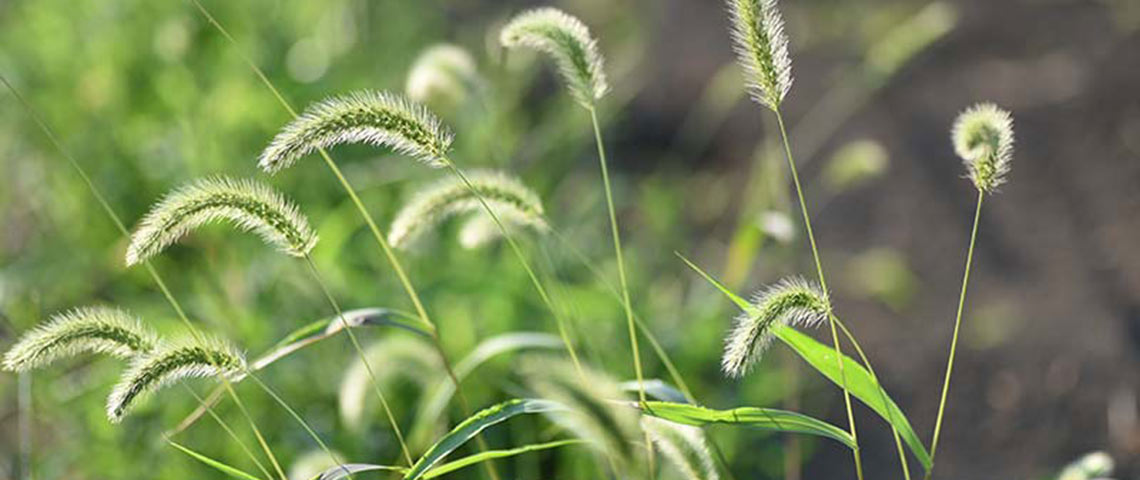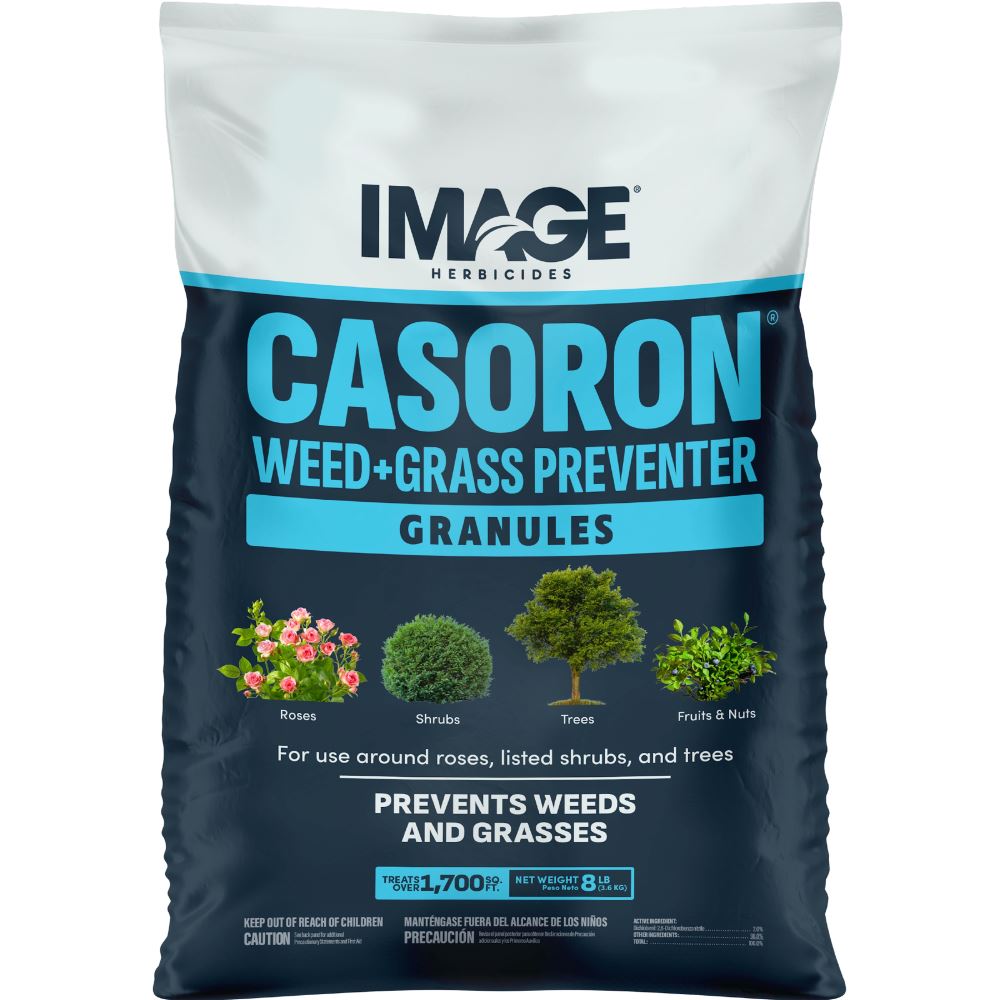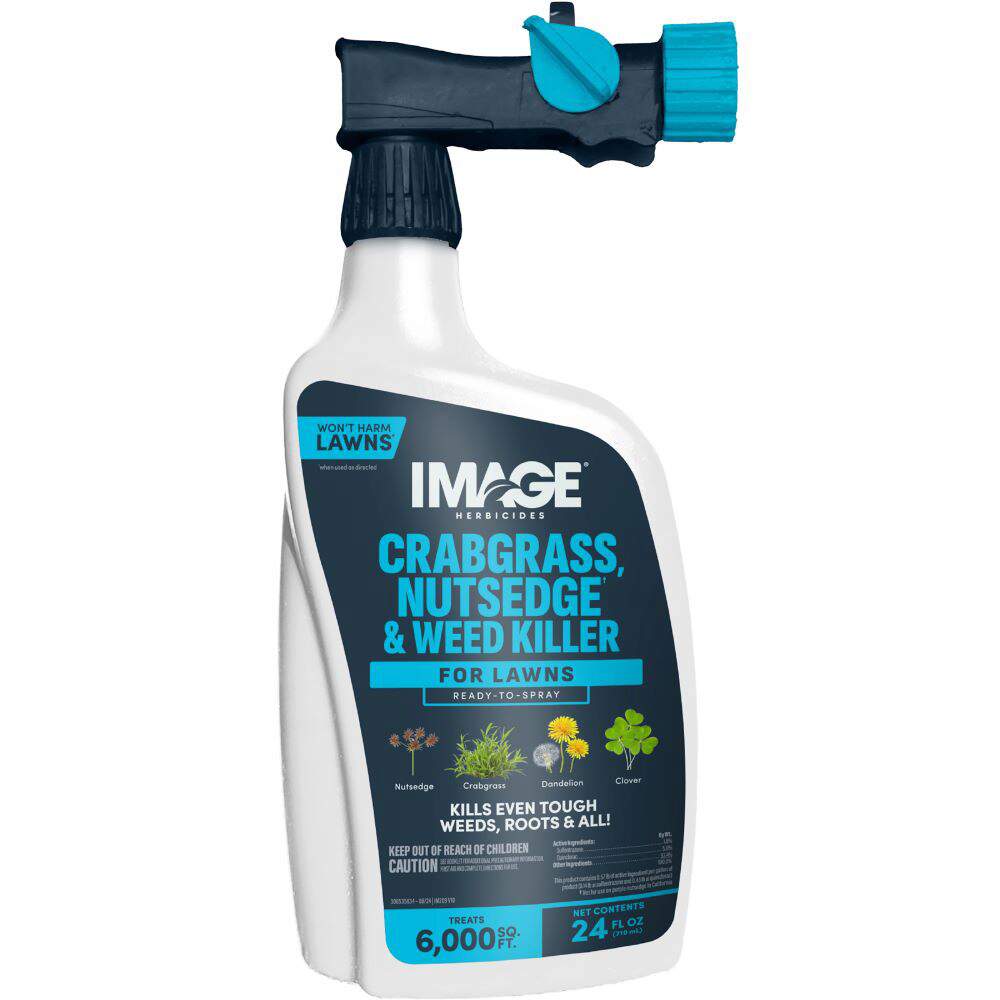HOW TO IDENTIFY FOXTAIL
The common name "foxtail" covers several species of clump-forming lawn weeds with fuzzy, cylindrical flower heads that inspire their common name. The bristle-brush flower heads and seed heads top erect, arching stems and grow up to 6 inches long. The seeds they produce allow these annual grassy weeds to grow back year after year.
Depending on the species, foxtail stems may grow up to 3 feet tall or more. Leaves may have long base hairs, short surface hairs, hair-rimmed margins, or no leaf hairs at all. In contrast to annual bluegrass (Poa annua) leaves, which are folded in unopened leaf buds, foxtail leaves are rolled in the bud, like crabgrass leaves. Foxtail weeds have fibrous root systems that don't creep.
WHERE AND WHY FOXTAIL GROWS
Foxtail grows throughout the United States. It often invades lawns, landscapes, parkways and agricultural fields. This grassy weed prefers moist, fertile soil associated with irrigated lawns and gardens, but it adapts to coarse, rocky soil — even cracks in sidewalks and driveways. It struggles in shade but flourishes in areas with full sun.
Foxtail plants emerge each spring from seeds dropped the previous season and previous years. Depending on the species, a single plant may produce more than 10,000 seeds annually. The seeds — dispersed by wind, water, humans, birds and other wildlife — may stay viable in soil for 10 years or more.
HOW TO CONTROL FOXTAIL
Because foxtail belongs to the grass family, typical broadleaf weed killers won't work on this weed. When treating foxtail or other lawn weeds, always read product labels and ensure the product is suitable for your lawn grass type. Only treat established lawns.
For best results, treat foxtail as soon as new plants emerge, before they can flower and set seed for next year. Image Herbicides offer several highly effective liquid products to kill or control foxtail:
- Image Herbicides Crabgrass & Weed Killer for Lawns, available in Ready-to-Spray and Concentrate formulas, kills foxtail and other tough weeds — roots and all. For best results, apply this selective post-emergent herbicide when soil is moist and foxtail is young and small.
- Image Herbicides Crabgrass, Nutsedge & Weed Killer for Lawns, available in Ready-to-Spray and Concentrate versions, is a selective post-emergent weed killer. It starts working on contact to kill foxtail and other tough listed weeds down to the root.
- Image Herbicides Casoron Weed + Grass Preventer Granules prevent foxtail from emerging around established woody plants, including listed shrubs, trees, berries and fruits. This product prevents regrowth of foxtail and other listed plants for up to one year in treated areas.
Foxtail Control Tip: Effective foxtail control combines preventing new seed from forming and treating new plants that emerge from old seed in soil. Treat this weed before it sets seeds to break the cycle for future seasons.
Crabgrass-preventing spring lawn treatments such as Pennington Full Season Weed & Feed 25-0-8 also help prevent foxtail seed from establishing.
Always read product labels thoroughly and follow instructions, including guidelines for lawn grasses, frequency of applications and seasonal maximums that may apply.
FOXTAIL GALLERY

Foxtail Patch

Foxtail Along Curb

Foxtail Base

Foxtail Leaf Collar

Foxtail Seed Head




